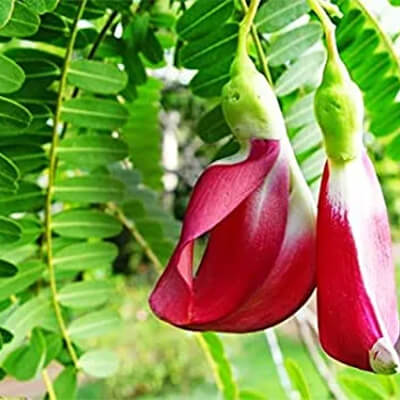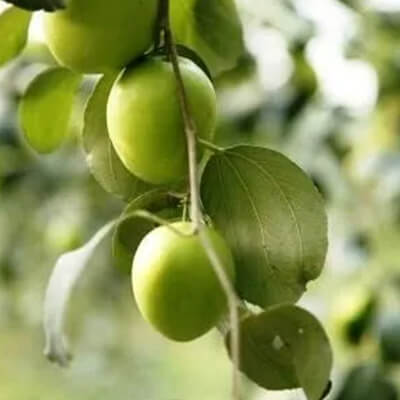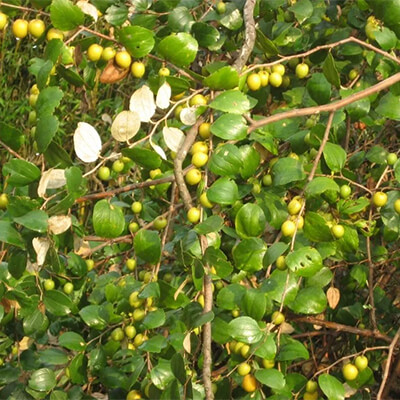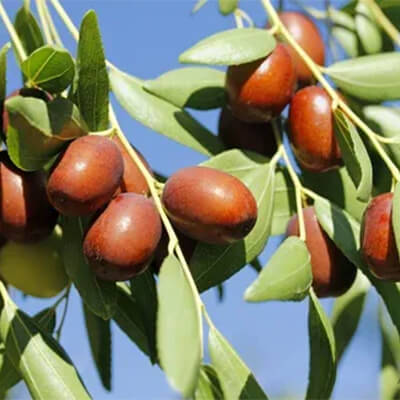On This Page
Agastya – The Natural Source of Iodine
Introduction
Agastya is a legume plant that looks like a Moringa plant that contains natural Iodine. Agastya’s name of the plant is derived from the fact that this herb is a favorite of Agastya Munni and it is commonly famous with the name hummingbird tree. Agastya, botanically known as Sesbania grandiflora is found mostly in the tropics and is a rich source of Vitamin A, B, C, calcium, phosphorus, iodine, iron, etc. In Ayurvedic classical texts, Agastya is considered the drug of choice for night blindness i.e Nakta Aandhya. Today, Agastya is very famous in nutraceutical companies as it is a rich source of biotin that is used for hair problems. Recent research revealed that the Agastya tree contains a saponin that is non-toxic and exhibits various activities like alixetric activity, anti-helminthic activity, diuretic, and laxative properties, etc.
Basonym of Agastya
अगस्त्य नक्षत्रे पुष्पाणि सन्त्यस्य इति वा | न गच्छति रात्रौ नकतान्ध्य त्वादित्यग: अगतवं स्त्या यति स्तभनोती त्यगस्तय: |
Agastya (Sesbania grandiflora Pers.) plant blossoms in Sharad Ritu (Autumn season) when Agastya Star appears in the sky. Agastya plant is rich in Vitamin A so it is very useful in eye disorders like night blindness, etc.
Synonyms of Agastya
- According to habitat
वङ्गसेन – वङ्ग देशे बाहुल्येन जायमान: |
Agastya plant grows more in Vnaga Desha (Bengal region).
- According to morphology
वक्र पुष्प: – वक्रं पुष्पम अस्य |
The flowers of Agastya are curved in shape.
मुनि पुष्प: – अगस्त्य उदय काले पुष्पित त्वात |
Agastya plants flowers when the Agastya star is seen in the sky.
- According to properties and action
व्रणारि: – वर्ण नाशक: |
Agastya is very useful in the case of wounds.
- Others
मुनि द्रुम: – मुनि द्रुम: अगस्त्य नामक त्वात |
Agastya plant is regarded as a very sacred tree.
Regional Names of Agastya
- Tree Bean, Vegetable Hummingbird Tree (English)
- Agasthya (Hindi)
- Agache (Kannada)
- Agatthi (Malayalam)
- Agastha (Marathi)
- Agati (Tamil)
- Avisha (Telugu)
Botanical Name
Sesbania grandiflora Pers.
Sesbania word is given in the memory of the botanist.
Grandiflora is derived from the word grandi means big, and flora, which means flowers.
Family
Fabaceae/ Papilionaceae (Aprajita Kula)
Ayurveda Reference for Agastya (Sesbania Grandiflora)

Scientific Classification of the Agastya
| Kingdom | Plantae |
| Class | Dicotyledons |
| Subclass | Polypetalae |
| Series | Calyciflorae |
| Order | Rosales |
| Family | Fabaceae (Papilionaceae) |
| Genus | Sesbania |
| Species | Grandiflora |
Classification of Agastya as per Charaka and Sushruta
- Charaka: Not included in Varga
- Sushruta: Mentioned in Pushpa and Shaka Varga
Agastya’s Description in Brihtrayi
Shusruta Samhita: S. S. Su. 46/ 281, 282
Agastya’s Description in Brihtrayi as synonym Kumbh Yoni
Vagbhata: A. H. U. 13/ 90
Historical Background of Agastya
This is a small tree growing up to 10 meters bearing big Agastya white or red flowers. It is available wildly present as well as cultivated in most parts of India. Charaka has not mentioned this plant. Sushruta described it under Shaka Varga (S. S. Su. 46) while Vaghata quoted it as Kumbhayoni (A. H. U. 13). Sushruta highlighted the utility of Agastya in Naktandhya (night-blindness). All the Nighantus have described it. In Raja nighantu, four varieties of Agastya have been mentioned: Sveta, Pita, Nila & Rakta.
Varieties of Agastya
Raja Nighantu: Raja Nighantu has mentioned 4 varieties of Agastya based on color.
- Shweta – White flower variety
- Pitta – Yellow flower variety
- Nila – Blue flower variety
- Rakta – Red flower variety
Commonly red or white color flower varieties are found.
External Morphology of Agastya (Sesbania Grandiflora)
- Habit: Agastya is a tall, soft wooded medium-sized slender tree. Grows up to 30 ft. in height.
- Leaves: Leaves of Agastya are 15 to 30 cm long, compound, leaflets are 16 to 30 in pairs, linear-oblong shaped.
- Inflorescence: Raceme.
- Flowers: White and very attractive. 2 to 4 flowers will be seen in one cluster. Petals are 8 cm long.
- Fruit: Pod and up to 50 cm long.
Flowering and fruiting time
February to March i.e., in the cold and spring season.
Distribution of Agastya
The plant is found in Bengal, Southern India, and Gangetic regions. It is abundantly found in Burma. Agastya is cultivated in various regions i.e., Gujarat, Assam, and Kerala.
The Useful Part of Agastya
Whole plant: Flowers, leaves, bark, roots, and fruits.
Important Phytoconstituent of Agastya
Methyl oleanolate in flowers, Kaempferol, (+) leucocyanidin, etc. from seeds. The bark contains Tannin and red-colored resin. Leaves have protein, Vitamin A, B & C, and minerals like Calcium and Phosphorus. Flowers contain Vitamin B & C and proteins.
Recent Research on Agastya
- A study was done to evaluate the neuroprotective role of Sesbania grandiflora against chronic cigarette smoking-induced toxicity. The result of the study indicates that chronic cigarette smoke exposure accelerates oxidative stress, thereby disquieting the brain’s defensive mechanism and Sesbania grandiflora protects the brain from oxidative damage through its biopotency. Ramesh T, Sureka C, Bhuvana S, and Begum VH. Oxidative stress in the brain of cigarette smoke-induced noxiousness neuroprotective role of Sesbania grandiflora. (Metab Brain Dis. 2014 Sep. 9.)
- Hypoglycemic activity
- Hypo uricemia activity
- Antibacterial activity
- Antioxidant activity
- Analgesic activity
- Anticonvulsant activity
- Antimicrobial activity
- Anti-cancer activity
- Hypotensive activity
Nutritional Facts of Agastya Flower per 100-gram
| Calories | 345 calories |
| Protein | 14.5 g |
| Fats | 3.6 g |
| Carbohydrates | 77. 3 g |
| Fibers | 10. 9 g |
| Calcium | 145 mg |
| Phosphorus | 290 mg |
| Iron | 5. 4 mg |
| Sodium | 291 mg |
| Potassium | 1400 mg |
| Thiamine | 0.91 mg |
| Riboflavin | 0.72 mg |
| Niacin | 14.54 mg |
| Ascorbic acid | 473 mg |
| Beta carotene | 636 micrograms |
The seed oil of Agastya consists of 12.3 percent palmitic, 26.2 percent oleic, and 53.4% of linoleic acid.
Rasa Panchaka of Agastya
| Rasa (Taste) | Tikta (Bitter) |
| Guna (Virtue) | Laghu (light), Ruksha (dry) |
| Virya (potency) | Sheeta (cold potency) |
| Vipaka (post-digestion) | Katu (pungent) |
Dosha Karma of Agastya
Kapha – Pitta Shamaka
Kapha Hara because of Katu Vipaka and Tikata Rasa.
Pitta Hara because of Sheeta Virya and Tikta Rasa
Karma (Actions) of Agastya
Netra Roga Hara, Jwara Hara, Pratishaya Hara, Kasa Hara, Shrmahara, Shoolhara, Varnya
Prayogarha Vyadhi (Therapeutic Indication) of Agastya
- Netra Roga
- Pratishaya
- Shrama
- Kasa
- Shool
- Vaivarnya
- Pandu Roga
- Gulma
- Shosha
- Pliha Vikara
- Jwara
- Chaturthika Jwara
Aamyik Paryog (Therapeutic Uses) of Agastya
- Jwara (Fever): The juice of the leaves dropped into the nostrils alleviates quartan fever (Chaturthika Jwara). (Vrinda Madhava. 1/ 238, Bhava Prakasha Samhita Chiktsa Sthana. 1. 771, Vaidya Jivana. 1/ 54)
- Apasmara (Epilepsy): Leaves are mixed with Maricha and pounded with urine. It is instilled into the nostrils of the patient with epilepsy. (Harita Samhita. 3. 18. 7)
- Nakata Aandhya (Night blindness): Susruta (S. S. U. 46/ 282) recommends an intake of flowers in night blindness. Vagbhata in A. H. U. 13/ 89 recommends the intake of ghee processed with the leaves of Agastya.
- Kshaya, Kasa (Wasting and cough): Sushruta also prescribes flowers for wasting and coughing.
- Vata Rakta (Gout): Buffalo’s milk is curdled with the powder (Churna) of flowers and the butter extracted therefrom is useful in severe Vata Rakta. (Vrinda Madhava 23/ 7)
- Shool (Colic): Decoction of the bark of the plant added with salt and asafetida relieves colic. (Vaidya Manorma 8/ 21)
Benefits of Agastya
- Hypertension (Uccha Rakta Chappa): Recent research has revealed that Vitamin C plays an important role in lowering high blood pressure. Along with this, research proved the important role of Vitamin C in slowing down the hardening of arteries i.e., atherosclerosis. Agastya plant is a rich source of Vitamin C. Taking one cup of Agastya which consists of approximately 14.6 mg of Vitamin C will fill the 16. 22 percent of your daily need for vitamin C.
- Diabetes (Parmeha): Agastya exhibits anti-diabetic activity due to which it repairs the damaged cell of the pancreas. Along with this Agastya helps to maintain a healthy lipid profile and remarkably stabilizes the HbA1C level. Thus, helping to treat diabetes.
- Healthy bones (Asthi Balya): As we earlier discuss the nutritional facts of Agastya that showed that Agastya is a rich source of calcium, Vitamins, Iron, etc which are very important to decrease the risk of Sandhi Vata i.e, osteoporosis, arthritis, etc. along with this these nutrients are very important for fortifying the bones. Intake of Agastya improves bone mineral density, prevents fragile bones, etc.
- Fetal Development (Garbhini Paricharya): Today as everyone knows that deficiency of folate may lead to neural tube defect in the fetus which may result in termination of pregnancy or spina bifida in the baby. Agastya is a rich source of folate and consists of approximately 20 micrograms of Vitamin B9.
- Cancer (Arbud): Agastya is full of antioxidant properties and recent research also proved the anticancer activity of the Agastya which hinders the growth of tumor cells by preventing lipid peroxidation. Therefore, the use of Agastya under medical supervision helps to treat cancer. Agastya flowers are very famous among Ayurvedic doctors for treating lung cancer and colon cancer due to their apoptosis effect.
- Tuberculosis (Kshaya Roga): Agastya leaves exhibit anti-microbial properties due to cysteine and cystine present in their leaves. These active principles also exhibit an antioxidant effect. Roots of Agastya have a powerful antimicrobial effect against Mycobacterium tuberculosis while leaves and flowers of Agastya possess an antimicrobial effect against staphylococcus aureus and E. coli. Leaves of Agastya also possess antifungal activity against Candida albicans and Aspergillus niger. Therefore, it helps to treat various fungal disorders.
Effect of Agastya on Different Systems of Bodies
- External use on skin: Bark and leaves are useful in inflammation and wounds.
- Internal uses: Swarasa of Agastya Patra (Juice of Agastya leaves) is useful in Virechan Nasya (Shirovirechana). Flowers are useful in ophthalmic disorders. Agastya is a brain tonic and antitoxic.
- Digestive system: Vegetable flowers and leaves are useful in constipation. The Swarasa of Twaka (juice of the bark) is used in chronic intestinal disorders with Madhu (honey). The juice of flowers is used in the purification of silver. It is also used in loose motions.
- Respiratory system: Pleuritis, cough, cold. In Kapha Jwara, Chaturthik Jwara, and Sannipatik Jwara, nasal administration of leaf juice is done.
- Reproductive system: Useful in leucorrhea.
Agastya in Rasashastra
- Marana process of Naga Bhasma (lead ash): Agastya and earthworm is triturated and pastes of both are made. The paste made from these two ingredients is smeared over the sheets of Lead i.e Naaga. Smeared sheets of lead are then cooked in an iron pan till it melts.
- Shodhana of Makshika: Juice (Swarasa) of Agastya leaves is made. Then paste (Kalka) of Shigru roots is made by triturating it with Agastya Swarasa. Makshika should be immersed in the paste for Shodhana/ Purification.
- Shodhana of Vajra (Diamond purification): Juice of Shami, Syama, Agastya, Punarnava, Dhustura, Kodrava, Akhparni, Dhamarova, Kunatha, Dhoosra, the tuber of Surana, Amalvetas, Meshshringi is used for Shodhana of Vajra (Diamond).
- Dhruti preparation: As per textbook Rasa Darpana, Pushpa Kalka i.e paste of flowers is made of Agastya and in this paste, mica is added and covered liquified by keeping it in the tuber of Surana. It looks like water.
- Loha Bhasma Preparation: As per Rasa Darpana, Iron is smeared with the Swarasa of Agastya and paste of Vidanga. After this, the above-smeared preparation is kept in the sun rays for a long time which results in the removal of impurities from Loha (iron) as the Agni (fire) melts the bolus of butter (Navneeta).
Matra (Therapeutic Administration and Dosage) of Agastya
- Swarasa (juice): 10- 20 ml
- Kwatha (decoction): 50- 80ml

Have A Health Issue?
Consult Online
- Dr. Sahil Gupta (B.A.M.S., M.H.A.)
Ayurvedic Allergy Specialist
CEO & Founder of IAFA®
Classical Reference of Agastya
Bhava Prakasha Nighantu Pushpa Varga- 60
Synonyms
अथागस्त्यो वङ्गसेनो मुनिपुष्पो मुनि द्रुमो |
Bhava Prakasha Nighantu Pushpa Varga- 61
Properties and action
अगस्ति: पित्तकफजिच्चातुर्थिकहरो हिमः |
रूक्षो वातकरस्तिक्तः प्रतिश्याय निवारण: ||
Raja Nighantu Karveeradi Varga, 48
अगस्त्यं शिशिरं गोल्यां त्रिदोषघ्नं श्रमापहम् |
बलास कास वैवर्ण्य भूतघ्नञ्च बलापहम् ||
अगस्ति: शीतलो रूक्षस्तिक्तो वातप्रकोपनः |
कफ पित्त प्रतिश्याय चातुर्थिक विनाशनः |
Kaiydeva Nighantu Aushadi Varga, 638- 641
तत्पुष्म नाति शीतोष्णं कटु पाक सतिक्तकम् |
कषायं वातलं पित्त कफ नक्तान्ध्य नाशनम् ||
सुस्वादु तिक्त कफहत् विरुक्षं शूल प्लीहा पाण्डु गर आमयघ्नं |
शोष च गुल्मं विनिहन्त्यगस्तिफलं नितान्त प्रकरोति पित्तम |
Priya Nighantu, Haritkyadi Varga, 223
अगस्त्यपत्र स्वरसो नस्याच्चातुर्थकान्तकः |
तिक्त: पितकफध्वंसी प्रतिश्याय विनाशन: ||
Raja Nighantu Karveeradi Varga, 48
Varieties
सित पीत नील लोहित कुसुम विशेषाच्चतुर्विधो अगस्ति: ||
Raja Nighantu Karveeradi Varga, 46- 48
अगस्त्य गुण
मधुर शिशिर त्रि दोष श्रम कास विनाशनञ्च भूतघ्न: |
अगस्त्यं शिशिरं गोल्यां त्रिदोषघ्नं श्रमापहम |
बलास कास वैवर्ण्य भूतघ्नञ्च बलापहम ||
Bhava Prakasha Nighantu Shaka Varga, 48
अगस्त्य पुष्पस्य गुण: – अगस्त्य पुष्प शाकम
अगस्ति कुसुम शीतं चातुर्थिक निवारणं |
नकतान्ध्य नाशनम तिक्तं कषायं कटु पाकि च |
पीनस श्लेष्म अपिव्घ्नं वातघ्नं मुनिभिः मतम ||
Shodhala Nighantu
अगस्त्य पुष्पं पत्रञ्च
मुनिवृक्षदलं लूता व्रण विध्वंसि श्लेष्म नुत् |
तत्पुष्प वातलं तिक्तम कषायं कटुपाकि च ||
क्षय कास हरं चैव पित्त श्लेष्मापकर्षणम् |
Sushruta Samhita Sutra Sthana. 46/ 282
तस्य (अगस्त्य) शाकम्
अगस्त्यं (शाकं) नातिशीतोष्ण नक्तान्धानां प्रशस्यते |
Bhava Prakasha Chikitsa Sthana
वात रक्ते
अगस्ति पुष्प चूर्णन माहिषं जनयेदधि |
Vaidya Manorma
शूले
नागर शोभाञ्जनयो: क्वाथ: शूलं विनाश्येतविदिनात |
मुनितरुवल्क क्वाथ स्तद द्वत पटु रामठ प्रतिवाप: ||
Vrinda Madhava, Jwara Adikara, 238
चातुर्थिक ज्वरे
अगस्ति पत्र स्वरसेन नस्यम निहन्ति
चातुर्थिकमुग्र रूपम
Harita Samhita Chikitsa Sthana, 43
बालानां अपस्मार
रसं चागस्तिपत्रस्य मरिचे: प्रतियोजितम् |
एतेन प्रति सौख्यं स्यात् ||
Harita Samhita Chikitsa Sthana, 19
अपस्मार
अगस्तिपत्रं मूत्रेण मरिचं परिपेषितम् |
तस्य पिष्टमपस्मारं हन्ति शीघ्र नरस्य तु ||
Ashtanga Hridya Uttara Tantra. 13/ 79
निशान्ध्ये
भृष्टं घृतं कुम्भयोने: पत्र पाने च पूजितम् |
Bhava Prakasha Samhita Vata Rakta Adhikare, 29/ 56
वातरक्ते अगस्त्य दधि
अगस्ति पुष्प चूर्णन माहिषं जनयेद्दधि |
Specific Formulation of Agastya
- Grahani Kapata Rasa for Grahni and Atisara
- Pittakasantaka Rasa for Swasha and Kasa
Contraindication and Side Effects of Agastya
Agastya plant is Vata Vardhaka in Karma. Therefore, it is contraindicated in Vata imbalance disorders like neuropathy, Nadi Dourbalya, bloating, etc. Avoid the use of Agastya during pregnancy and breastfeeding. If used in hypertensive patients, use it under medical supervision as it may interact with hypertensive medicine and may result in an excessive lowering of blood pressure.
Suggestive Reading Regarding Agastya (Sesbania Grandiflora)
- Shamali Dange, Ravindra Jadhav, Sunayana Vikhe. Phytochemical and Pharmacological Review of Sesbania grandiflora. Asian Journal of Pharmacy and Technology. 2022; 12 (1): 20- 4. doi: 10. 52711/ 2231- 5713. 2022. 00004
- Venkataeshwarhu G, Shantha TR, Shiddamallayya N, Kishore KR. Traditional and Ayurvedic medicinal importance of Agasthya leaves [Sesbania grandiflora (L) Pers.] WRT its pharmacognostic and physicochemical evaluation. Int J Res Ayurveda Pharm. 2012; 3: 1937.
- Reeta M, Ravindra S, Akhilesh M, Rama Murthy A. Agastya (Sesbania grandiflora Linn.): Ayurvedic approach. Uni J Pharm 2013; 2:15.
- Dwivedi C, Chandrakar K, Singh V, Tiwari SP, Satapathy T, Kesharwani S, et al. Indian herbal medicines used for the treatment of dementia: An overview. Int J Pharm. 2014; 1: 553-71.
- Kanitta Jiraungkoorskul et al. Sesbania grandiflora: New nutraceutical use as antidiabetic. International Journal of Pharmacy and Pharmaceutical Sciences. 2015; 7: 27
- Gopalan C, Ramasastri BV, Balasubramanian SC. Nutritive value of Indian foods national institute of nutrition (Indian Council of Medical Research) Hyderabad, India; 2007. p. 18- 48.
- Roy A, Bhoumik D, Sahu RK, Dwivedi J. Anti-ulcer activity of aqueous extract of Sesbania grandiflora Linn stems in experimental animals. Indian J Res Pharm Biotechnology 2014; 2: 1254-6.
- Part L, Uma A. Protective effect of Sesbaniagrandiflora against erythromycin estolate induces hepatotoxicity. Therapy 2003; 58: 439– 43.
- Tathe PR, Bheemachari, Uplanchiwar V, Modi A, Gahane A, Jain SK, et al. Hepatoprotective activity of fruit extract of Sesbania grandiflora, Pers. Pharmacology online 2010; 3: 423- 30.
- Ramesh T, Begum VH. Effect of Sesbania grandiflora on lung antioxidant defense system in cigarette smoke-exposed rats. Int J Biol Chem 2007; 1: 141–8.
- Jeyaraj M, Sathishkumar G, Sivanandhan G, Mubarak Ali D, Rajesh M, Arun R, Kapildev G, Manickavasagam M, Thajuddin N, Premkumar K, Ganapathi A. Biogenic silver nanoparticles for cancer treatment: an experimental report. Colloids Surf B Biointerfaces. 2013 Jun 1; 106:86-92. doi: 10.1016/j.colsurfb.2013.01.027. Epub 2013 Jan 23. PMID: 23434696.
- Saifudin A, Forentin AM, Fadhilah A, Tirtodiharjo K, Melani WD, et al, (2016) Bioprospecting for anti-Streptococcus mutants: the activity of 10% Sesbania grandiflora flower extract comparable to erythromycin. Asian Pac J Trop Biomed 6: 751- 754.
- Sharmili, A (2016) Phytochemical Analysis of Aervalanata, Adathodavasica, Pisonia alba, Sesbania grandiflora, and Indigofera aspalathoides. Innovare J Ayurvedic Scie 4: 12- 15.
- Das A, Das MC, Sandhu P, Das N, Trivedi P, et al, (2017) Antibiofilm activity of Parkiajavanica against Pseudomonas aeruginosa: a study with fruit extract. RSC Adv 7: 5497- 5513.
- Ramesh T, Sureka C, Bhuvana S, Begum VH (2015). Brain oxidative damage restored by Sesbania grandiflora in cigarette smoke-exposed rats. Metab Brain Dis 30: 959- 968.
- Ramesh T, Mahesh R, Sureka C, Begum VH (2008). Cardioprotective effects of Sesbania grandiflora in cigarette smoke-exposed rats. J Cardiovasc Pharmacol 52: 338- 343.
References
- Agnivesha, Charaka, Dridhabala. In: Charaka Samhita, ed. Vaidya Jadavaji Trikamji Aacharya., editor. Varanasi: Chaukhamba Sanskrit Sansthan; 2009.
- Sushruta. In: Sushruta Samhita, Sutra Sthana, ed. Vaidya Jadavji Trikamji Acharya., editor. Varanasi: Choukhambha Orientalia; 2005.
- Vagbhata. In: Ashtanga Hrudaya, 9th ed. Anna Moreshwar Kunte, Krishnashastri Navarre, Harishastri, editors. Varanasi: Choukhambha Orientalia; 2005.
- Bhavamishra. In: Bhava Prakasha Nighantu, Pushpa Varga, Shaka Varga 11th ed. part 2. Brahma Shankara Mishra., editor. Varanasi: Choukhambha Bharati Academy; 2009.
- Bhavprakasha, commentary by Bulusu Sitaram, forwarded by K.C.Chunekar
- Sharma PV, Kaideva Nighantu. Aushadhi Varga. Chaukhamba Orientalia, Varanasi; 2006:
- Tripathi I., Raja Nighantu, Karveeradi Varga, Chaukhamba Krishnadas Academy; Varanasi; 2010
- P.V. Sharma, Priya Nighantu, Haritkyadi Varga, Chaukhamba Krishnadas Academy; Varanasi.
- Dr. Gyanendra Pandey, Dravyaguna Vigyana, reprint 2012, Chawkhamba Krishnadas Academy
- K. Niteshwar Dravyaguna Vigyan, reprint 2017.
- Dr. J.L.N. Sastry and Dr. B.S. Sastry, Dravyaguna Vigyana, Chaukhambha Orientalia, Varanasi.
- Chakrapanidatta, Chakradatta with the vaidaya Prabha hindi commentary by indra deva tripathi, chaukambha sankrita sansthan, varanasi 2nd Edition, 1994.
Ayurveda is an Indian system of medicine that is popular since ancient times. Dr. Gupta’s IAFA® has been conducting research studies to find out different phytoconstituents of herbs and their action in the body. Such knowledge acquired by our experts is used in the preparation of medicines and providing the treatment facilities safely and effectively. IAFA® is the provider of safe and effective treatment for a wide range of diseases, mainly allergic diseases all based on Ayurveda.











